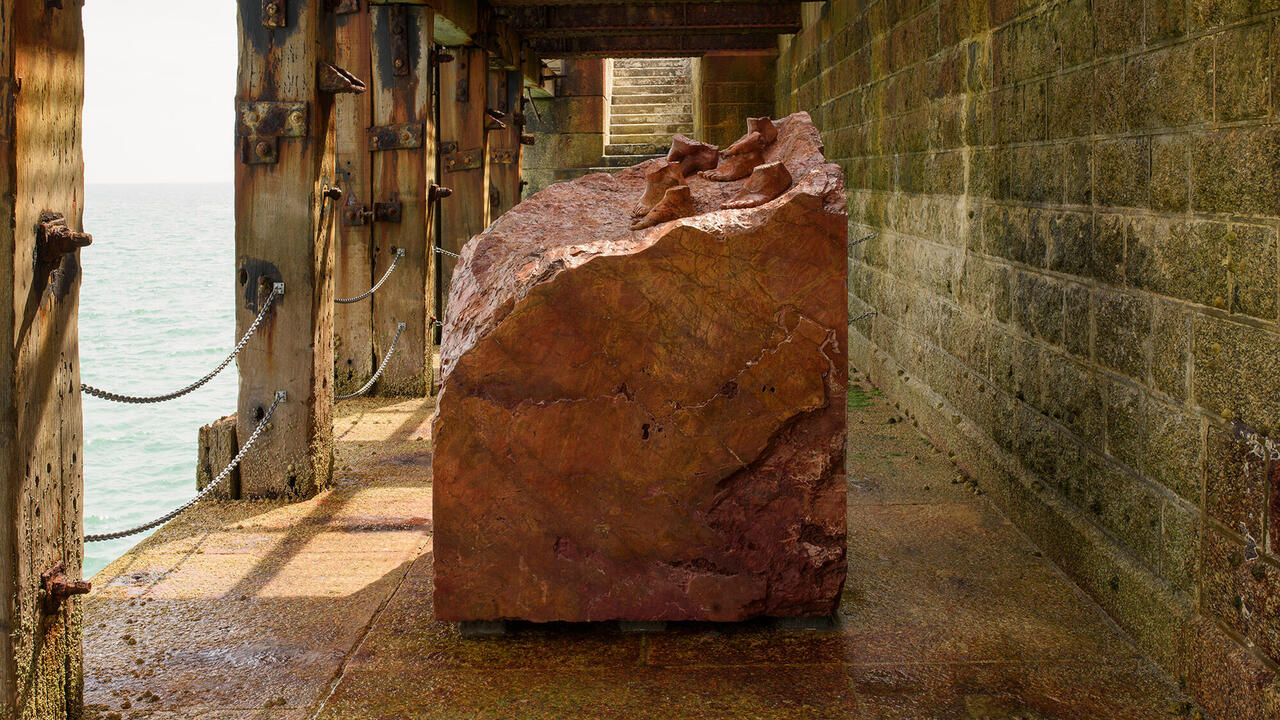The 58th Carnegie International Is an Assemblage of Revolutionary Strategies
Characterized by a series of micro-shows, this year’s exhibition approaches postwar US imperialism through a multiplicity of lenses
Characterized by a series of micro-shows, this year’s exhibition approaches postwar US imperialism through a multiplicity of lenses

‘Is it morning for you yet?’, the 58th Carnegie International, borrows its title from the Mayan Kaqchikel expression for ‘good morning’. It also reads as a plea: have we awoken from this nightmare? Foregrounding the impact of US imperialism since 1945, the exhibition reaches into pasts that occupy the present, cracking open perpetrations obscured in collective consciousness or rarely apprehended together. With such an ambitious mandate, the show inevitably has its paradoxes: namely, how to de-centre the US while the country remains the protagonist of its thesis. At the same time, such oppositions – even contradictions – are key to its methodology. It is conceptually and structurally hybrid with works that range between abstraction and figuration, sorrow and hope, the historical and the contemporary. Presented both in the larger exhibition as well as in the micro shows within it, this selection yields an assemblage resisting singular meaning. What could this much mass despair and revolutionary strength look like, except for a magnitude exceeding individual comprehension?

Early on, the multiplicity of revolutionary strategies is conveyed through 344 inkjet prints of anecdotal notes, religious imagery and news clippings. Poema Colectivo Revolución (1981–83) by Colectivo 3, active in Mexico City in the early 1980s, is a powerful mail-art poem compiled from respondents across 43 countries that collages daily life during the US-backed Contra War. The project underscores how this exhibition provides tools to unpack the complexity of history through a variety of documents and media, while dismantling its own cohesion with vast breaks in chronology and narratives that meander through non-adjacent rooms.

A series of galleries functions as an active, living archive. These rooms contain some gems, in particular Felix Gonzalez-Torres’s black, white, green and red monochromes in solidarity with Palestinian resistance to Israeli military occupation (Forbidden Colors, 1988). Works here reposition ‘the contemporary’ and ‘the international’ as an amalgam of histories that explode horrifically today, such as the ongoing apartheid led by the Israeli government. These narrative threads intertwine in a refusal to stop creating, be it artistic affinities or solidarities.

Considerations of home and homeland, of internal life situated within enclaves for communal repair, generate a magnificent entanglement of works, from Dala Nasser’s enclosure of canvases stained with natural materials from Lebanon (The Tomb of King Hiram, 2022) to Ali Eyal’s tender drawings of plants indigenous to Iraq with phrases like ‘I wish you could come back to the house’ (Where Does a Thought Go When It’s Forgotten? And., 2019–22). A highlight among the show’s micro-shows is Fereydoun Ave’s Laal Collection, accumulated over decades in Iran, which includes the sumptuous kitchen still lives of Leyly Matine-Daftary, who, we learn from first-person wall texts, ‘transformed her home into a sort of bohemian haven’. Another anchor is Diane Severin Nguyen’s Tyrant Star (2019), an ethereal ambient pop video documenting a Ho Chi Minh City orphanage and a teenager seeking YouTube fame. Though laced with enigmatic humour, it speaks to the pathos of emotional disconnection.

Through its density, overlaps and dispersals – sometimes drifting offsite, as in Tony Cokes’s billboards (Pittsburgh.Isms. - Group A, 2022) – the exhibition challenges singular forms of history-writing that might have replicated colonial frameworks. Its culmination is Thu Van Tran’s Colors of Grey (2022), where an iridescent build-up of marks form smoky, mostly abstract frescoes in the Carnegie’s whitewashed marble sculpture hall. Referencing the US military’s use of Agent Orange and Rainbow Herbicides, the work is sited somewhere between a nightmare of past and present, seeming to dream of a new era. ‘Is it morning for you yet?’ coalesces around obfuscated histories that resist becoming another country’s trauma to fetishize. Instead, they refract, like particles of air, transforming from one state of being to another, never eliminated or pinned down.
‘Is it morning for you yet?: 58th Carnegie International’ is on view at the Carnegie Museum of Art and various venues until 2 April.
Main image: Margarita Azurdia, The Coming of the Goddess (left) and La Libertad (right), 1970–74, installation view. Courtesy: Carnegie Museum of Art; photograph: Sean Eaton






















